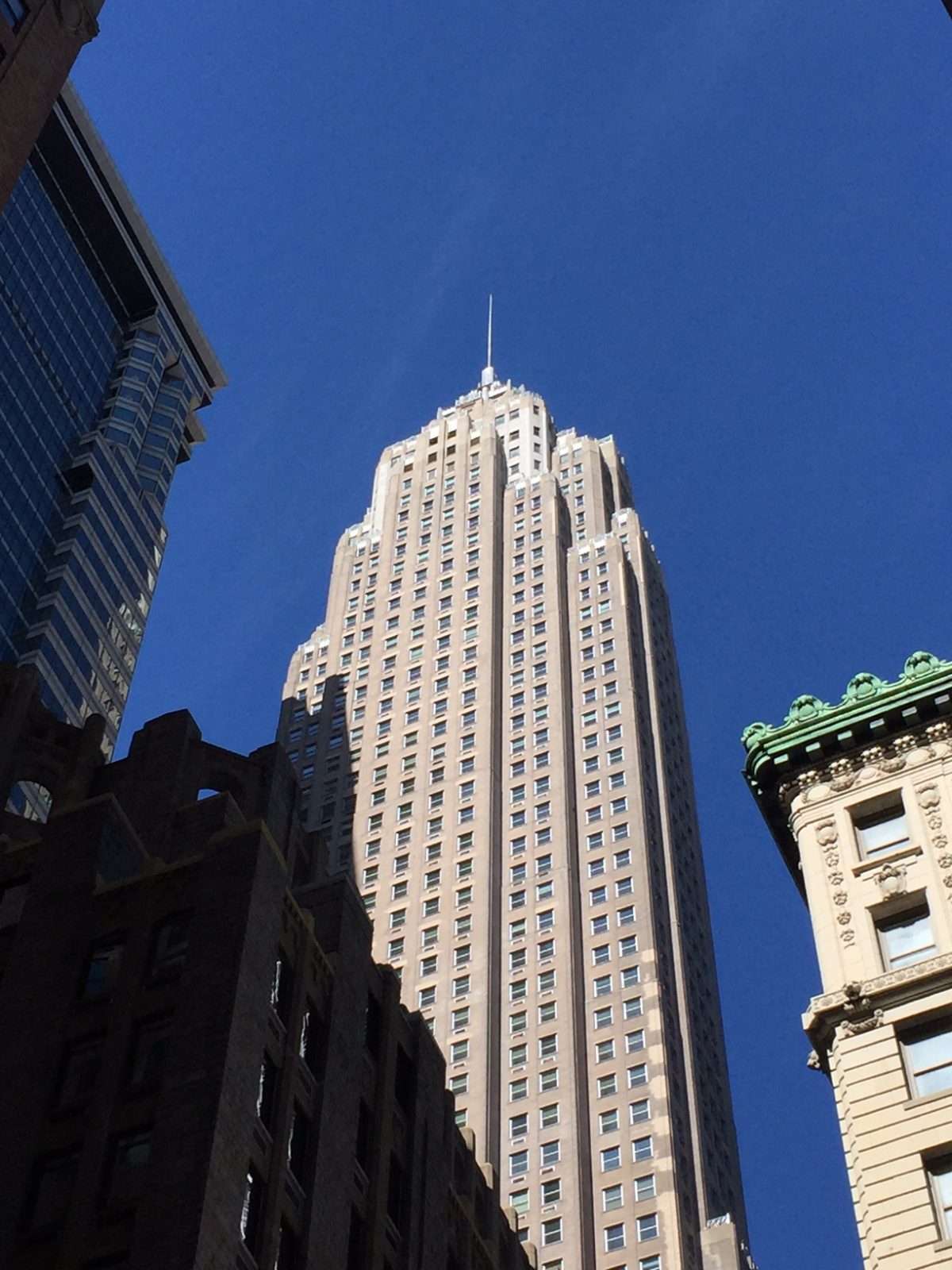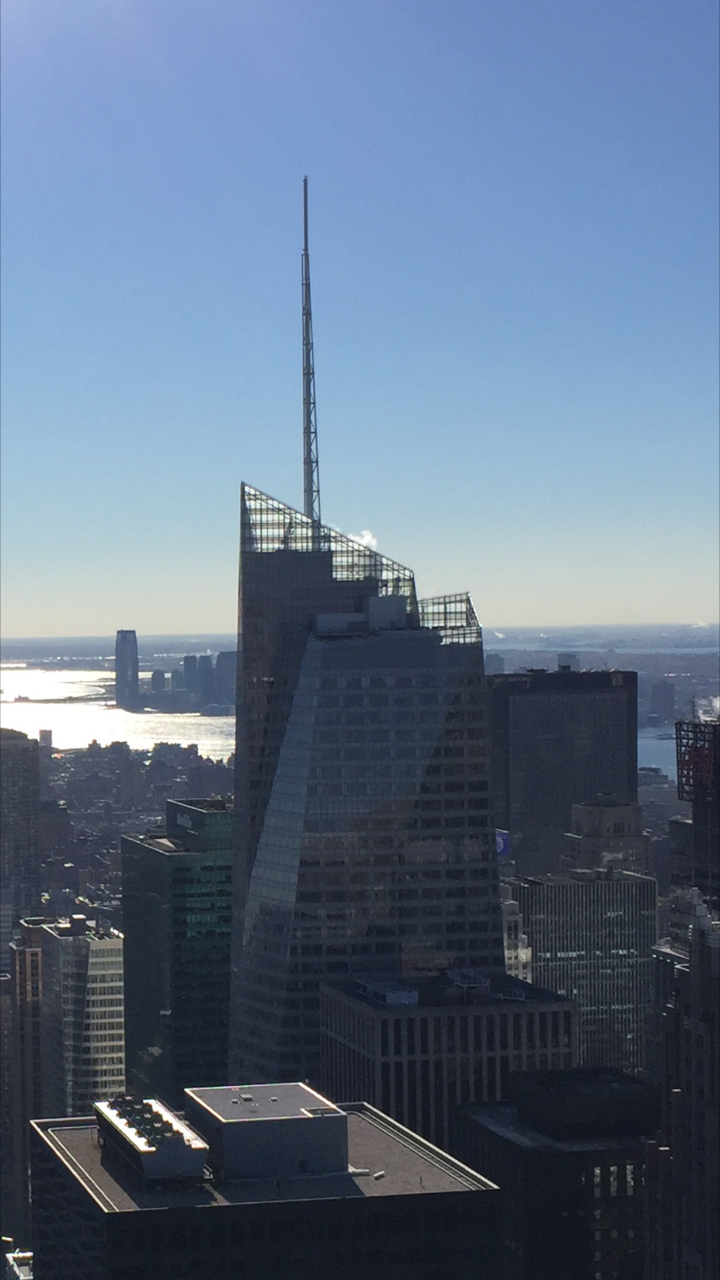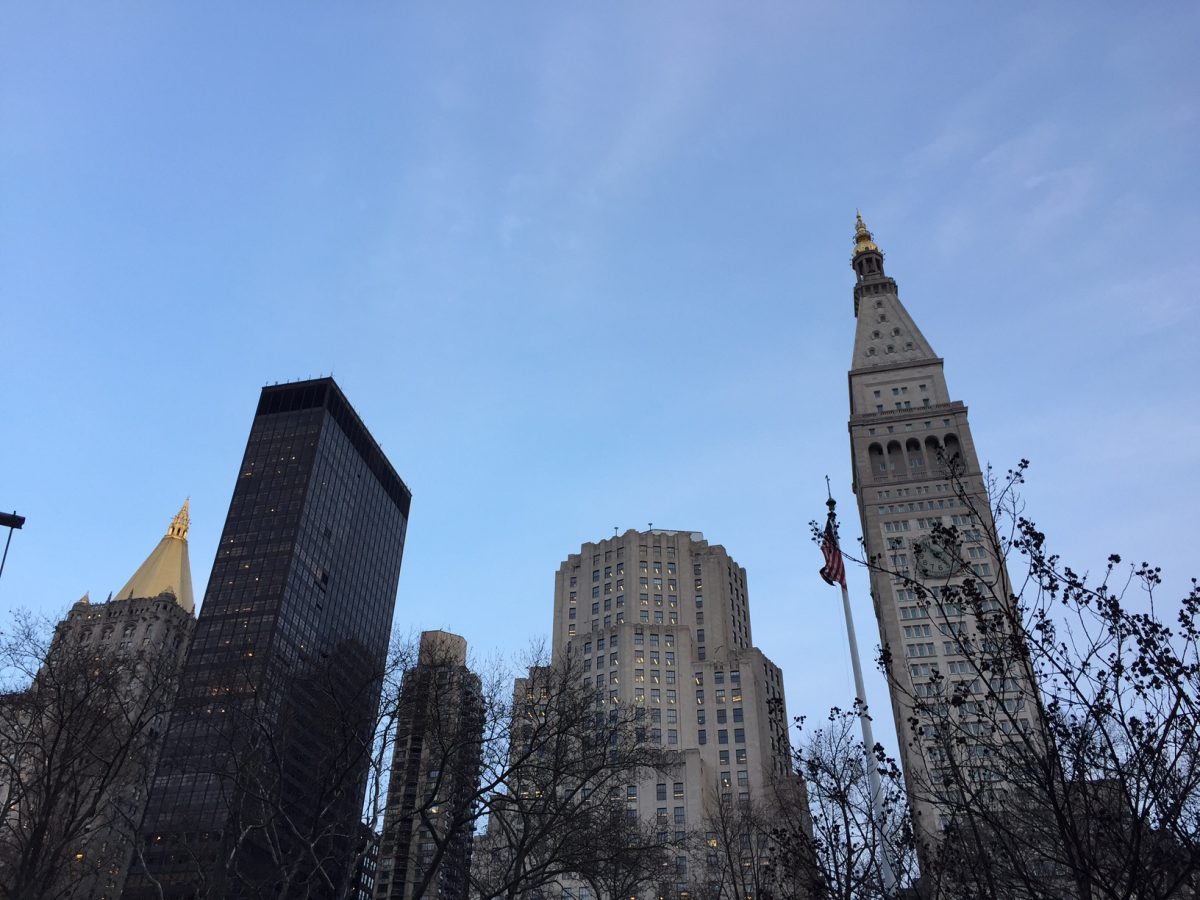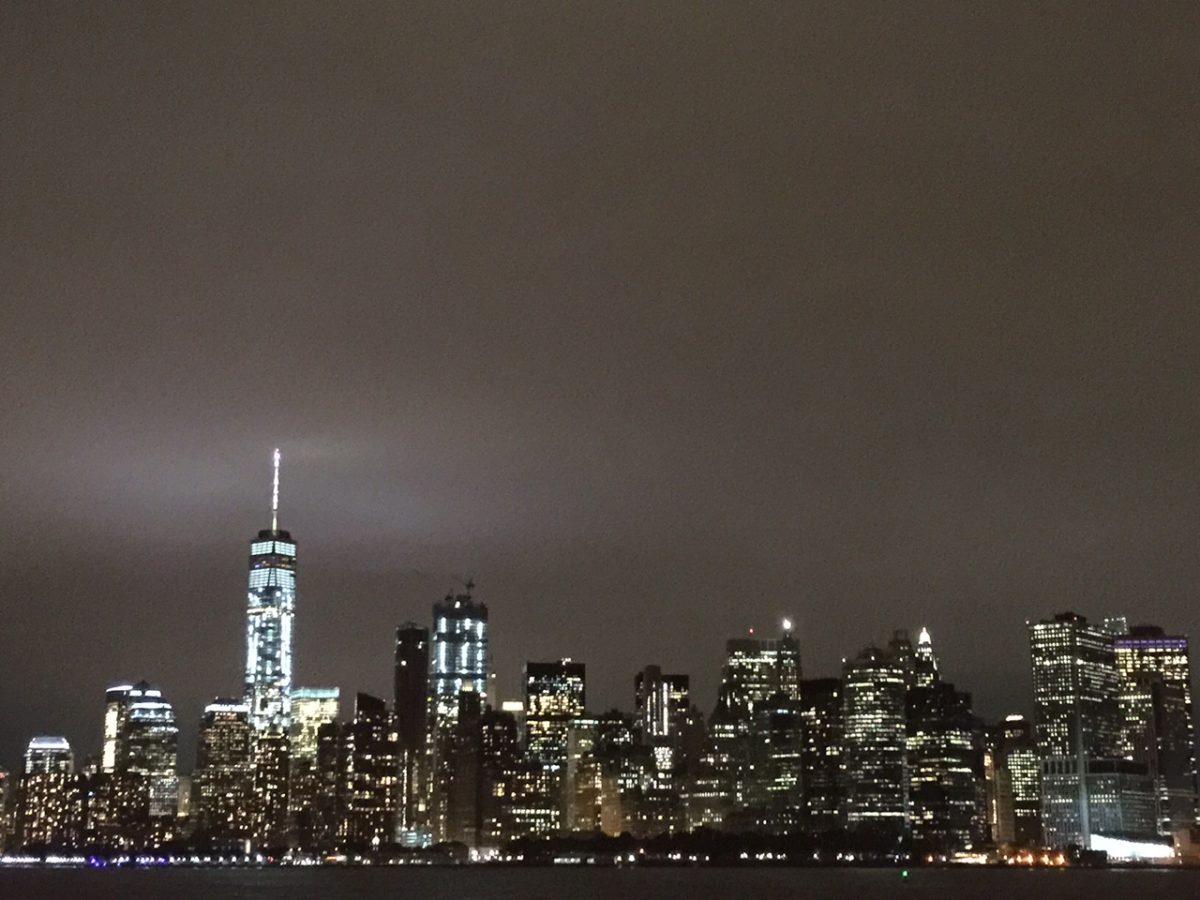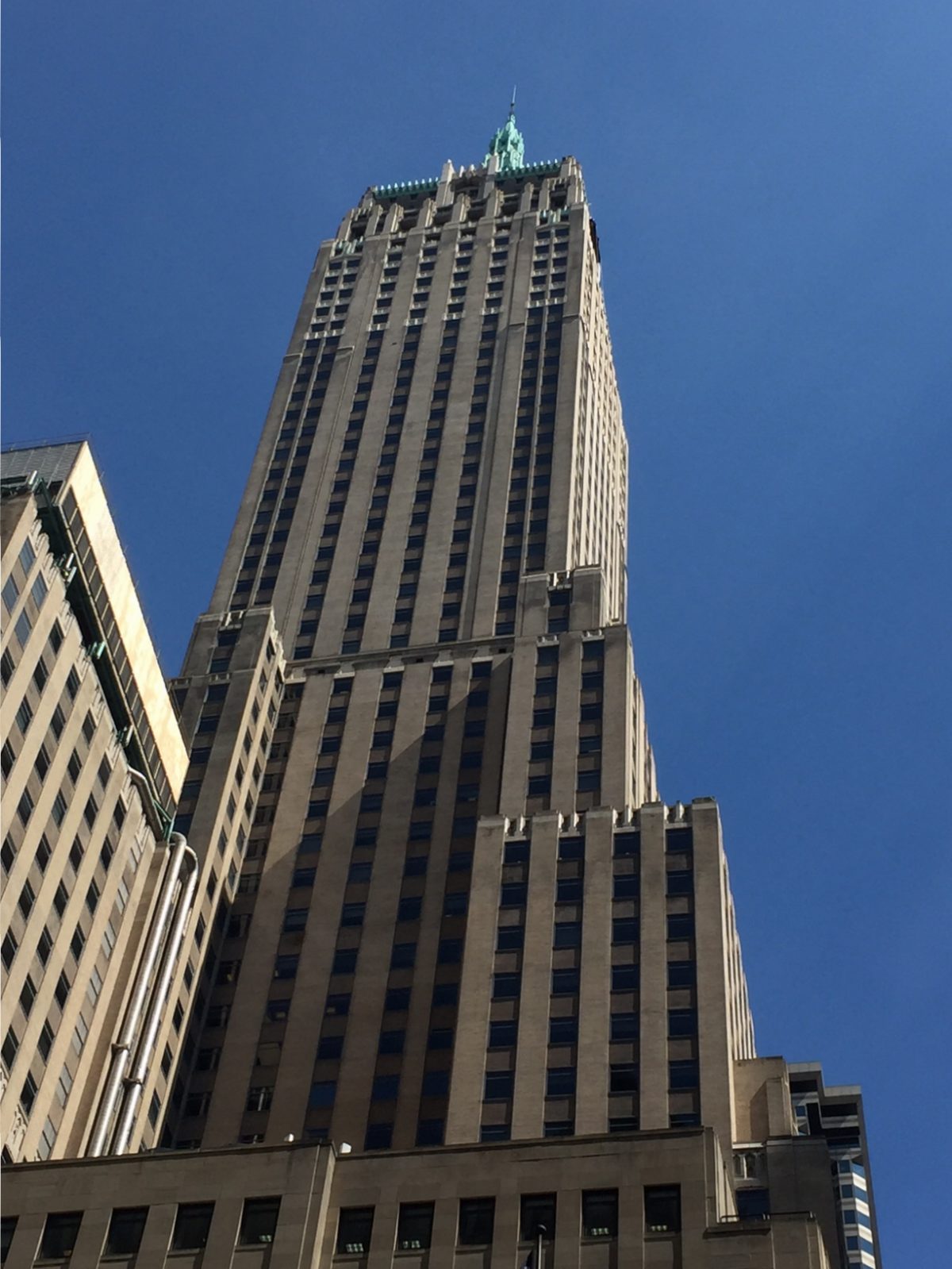In large clusters in Lower and Midtown Manhattan, Downtown Brooklyn, and Long Island City in Queens, there are skyscrapers. The quintessential New York architectural form rises up all over the city. A casual observer can tell the era a skyscraper was built in by its height and ornamentation. This entry will give a basic history of the skyscraper.
The skyscraper is a perfect building for New York as it rises vertically from a sometimes small parcel of land. It also allows a company to locate its offices together and for a landlord to rent out to many tenants to collect more rent for one building. The invention of the safety elevator and steel in the 1800s allowed structures to rise higher than six or seven stories (what the average person can tolerate walking). Other advances in mechanical technologies such as pumps to bring water up and sewage down, as well as more recent technologies such as solar panels and water recycling systems make the skyscraper desirable. New York is also geologically fortunate in that there is good bedrock to anchor these massive towers into the Earth.
The first skyscrapers were built in Chicago after that city’s great fire. The skyscraper first appeared in Lower Manhattan with many newspapers building skyscrapers along Park Row near City Hall. Others, such as the Equitable Life Building in Lower Manhattan was one of the first to have features of being a skyscraper; the structure had elevators and a high floor count. Many, including this building, had a Gilded Age/Beaux Arts style to them. This structure stood from 1870 to 1912, when it burned down. The company would build a much taller and larger building that would lead to a distinctly New York style.
The new Equitable Building was completed in 1915 and covered an entire city block, rising up to 40 stories and 538 feet. It ended up casting a shadow over the surrounding blocks. In response, the New York City Council passed the Zoning Ordinance of 1916, which required that skyscrapers adopt setbacks until the floor area matched 1/4 of the building’s site. At this point, the 1/4 segment could rise as far as was feasible or profitable to build. Many art deco-era skyscrapers in the city such as the Chrysler Building and the Empire State Building apply setbacks in their form. This same era saw a “race to the top” where skyscraper builders competed to have the world’s tallest building. Since the end of World War II, there has been a trend toward glassed-in International Style and contemporary-style buildings. Many of these rise straight up as they do not occupy the entire plot of land they are on (in compliance with the 1916 law) and have windows that reflect light down onto the streets below.
Although major building of skyscrapers still continues today, the tallest buildings are now located in the Middle East and Far East, where other countries are trying to pierce the heavens with taller and taller buildings. With this said, New York is still graced by some of the tallest buildings in the world, including 1 World Trade Center, the tallest in the Western Hemisphere. You will be able to see skyscrapers on any Sights by Sam tour.

